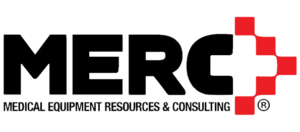CAPITAL STRATEGY INSIGHTS: Reimagining the Process #013

01.11.2023
#013 Strategic Capital Planning – Value Analysis Considerations
First, I hope everyone had a fun holiday break! For me it was a great time to press “Pause”.
In the last post we talked about Fair Market Value (FMV) and why FMV is not an algorithm. I alluded to a “lighter” post topic – I don’t know how light this is going to be.
When looking at capital equipment value analysis, I believe disposal costs play a much bigger role than what is generally believed. Let’s unpack disposal costs and identify some of the key components.
How will the Asset be retired?
As I said in Post #003, one of five things will happen in the liquidation or asset retirement process:
- Unit will be sold to a peer provider
- Unit will be sold to a used equipment reseller
- Unit will be traded-in to an equipment seller (new or used)
- Unit will be donated, either to a charity (domestic or international) or for education and/or research
- Unit will be terminally disposed (hopefully recycled and then off to the landfill)
Each of those steps are determined by the value of the asset, a function of how the asset is managed financially, and the decommissioning costs, of which the deinstallation requirements and costs are a subset.
Asset Value – In order to develop a pro forma for the subject asset or a comparison to other assets under consideration, one should determine which of these five methods represents the way the asset will be managed and retired, and how the asset equity will be preserved or lost during the asset management part of the life cycle. The question to answer is “What will the asset be worth and which method is likely to be used in the actual retirement of the asset?”
Decommissioning Costs – The are respective costs to the execution of the previous five methods, requiring a cost-benefit analysis to understand where the greatest recovery of asset equity or minimization of loss is incurred by method of retirement. While Deinstallation Cost is a subset of Decommissioning, we recommend breaking it out separately so that this portion of the analysis can focus on the administrative cost to remove the asset from the asset ledger and maintenance logs; registration, certification, and service discontinuation; and other costs associated with the decommissioning the asset.
Deinstallation Cost – If Decommissioning Costs are the administrative costs associated with retiring an asset, the Deinstallation Cost are the costs incurred when the asset is physically removed from the facility. As stated in Post #003, fixed asset removal has obvious costs, but what are the costs of rounding up all of the syringe pumps at your facility or health system? Then there is the logistics (the physical coordination) required to take the de-installed piece(s) and transfer them to the buyer/acquirer of the device(s). This requires scheduling, labor, dock space, Bill of Sale, and other cost events.
Summary
While looking into the other acquisition and value analysis considerations, one must be concerned with the future value of the asset to determine the total life cycle cost of the asset. How the asset is to be managed financially will determine asset retirement options, which combined with Decommissioning Costs (including Deinstallation Costs) will impact total value of the asset to the enterprise.
Like I said, not quite sure that was light reading. what the next topic will be. Until then, be well and as always, feel free to comment at info@medicalequipmentconsultants.com.


